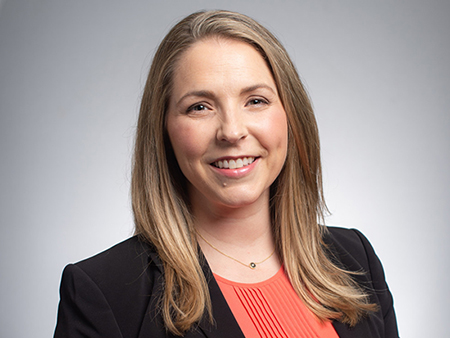 Lindsay A. Rhodes, M.D.Lindsay A. Rhodes, M.D., has received a five-year, $3.5 million grant to study innovative strategies to detect and manage glaucoma and other eye diseases in community-based settings so populations most at risk, most vulnerable, and least likely to have access to eye care can be better engaged by caregivers.
Lindsay A. Rhodes, M.D.Lindsay A. Rhodes, M.D., has received a five-year, $3.5 million grant to study innovative strategies to detect and manage glaucoma and other eye diseases in community-based settings so populations most at risk, most vulnerable, and least likely to have access to eye care can be better engaged by caregivers.
According to Rhodes, assistant professor in the University of Alabama at Birmingham Department of Ophthalmology and Visual Sciences, the number of primary open angle glaucoma cases will increase by 250 percent by 2050, directly affecting more than 7 million lives. These numbers are specifically for POAG and do not include the many who are monitored and treated for elevated intraocular pressure or for glaucoma suspect status, which along with POAG can all be considered glaucoma associated diseases.
“Development of high-quality, accessible, and cost-effective strategies for eye care for these individuals is of critical importance,” Rhodes explained. “POAG is at least four to five times higher in patients of African descent, progresses more rapidly, and appears about 10 years earlier as compared to those of European descent.”
Rhodes said the research plan seeks to implement and evaluate a telemedicine-based detection and management strategy for glaucoma associated diseases and other eye diseases, such as refractive error, cataract and diabetic retinopathy, in patients seen at Federally Qualified Health Centers located in Alabama’s Black Belt region.
“This region is characterized by one of the highest concentrations of people of African descent in the U.S. with high poverty, unemployment and uninsured rates; inadequate educational systems, transportation and community resources; few optometrists who largely practice in retail settings and no ophthalmologists specializing in glaucoma,” she said. “We have developed and tested a novel multimodal telemedicine approach in our prior CDC-funded Eye Care Quality and Accessibility Improvement in the Community study that used comprehensive remote optic nerve assessment.”
Rhodes said this proposal will employ a modification to the EQUALITY approach using portable measurement of visual function and optic nerve and retinal structure that are more applicable to rural locations with limited resources. Rhodes will also identify and evaluate remediation strategies for the barriers to patient adherence with referral and follow-up appointments. They will compare the effectiveness of financial incentives along with a validated patient education program versus a validated patient education program alone.
“Using this program within federally qualified health centers will enable expansion nationwide into rural and urban underserved locations, as these centers provide primary health care services in underserved areas and treat more than 27 million people yearly at over 12,000 sites,” she said.
UAB, the University of Michigan and Columbia University, are the three universities funded by the CDC to improve the detection and management of glaucoma and other eye diseases in high risk populations.
Christopher Girkin, M.D., department chair, Cynthia Owsley, Ph.D., Gerald McGwin, Ph.D., and Shilpa Register, O.D., will serve as co-investigators from Ophthalmology. Irfan Asif, M.D., chair of the Department of Family and Community Medicine will also serve as co-investigator.
